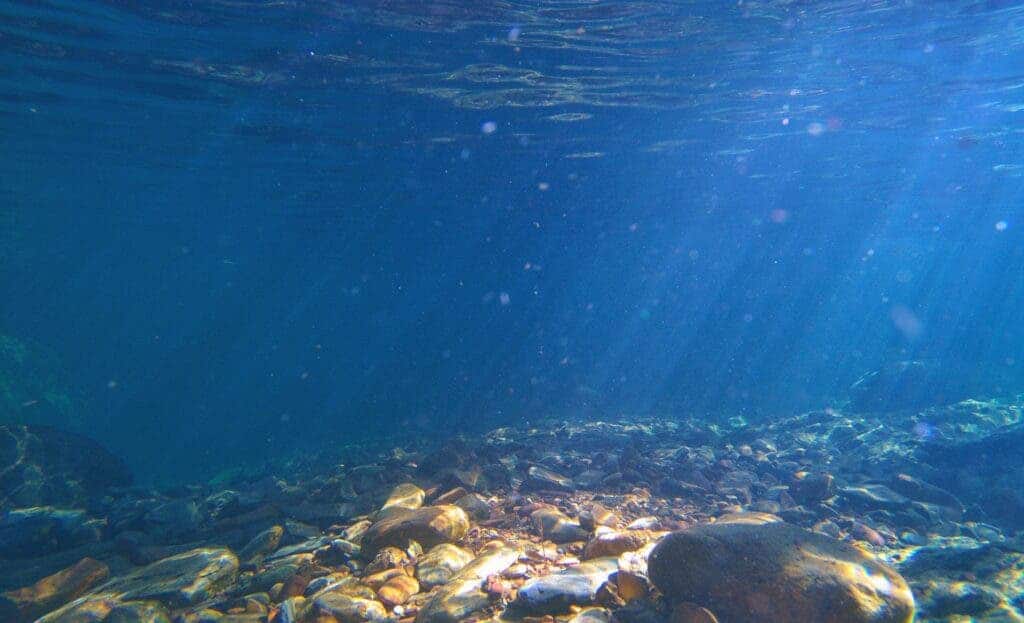Researchers at the University of Rhode Island’s (URI) Graduate School of Oceanography report that a whole ecosystem of microbes below the sea dines not on sunlight, but on chemicals produced by the natural irradiation of water molecules.

Whole bacterial communities living beneath the sea floor rely on a very curious food source: hydrogen released by irradiated water. This process takes place due to water molecules being exposed to natural radiation, and feeds microbes living just a few meters below the bottom of the open ocean. Far from being a niche feeding strategy, however, the team notes that this radiation-fueled feeding supports one of our planet’s largest ecosystems by volume.
Cooking with radiation
“This work provides an important new perspective on the availability of resources that subsurface microbial communities can use to sustain themselves. This is fundamental to understand life on Earth and to constrain the habitability of other planetary bodies, such as Mars,” said Justine Sauvage, the study’s lead author and a postdoctoral fellow at the University of Gothenburg who conducted the research as a doctoral student at URI.
The process through which ionizing radiation (as opposed to say, visible light) splits the water molecule is known as radiolysis. It’s quite natural and takes place wherever there is water and enough radiation. The authors explain that the seafloor is a particular hotbed of radiolysis, most likely due to minerals in marine sediment acting as catalysts for the process.
Much like radiation in the form of sunlight helps feed plants, and through them most other life on Earth, ionizing radiation also helps feed a lot of mouths. Radiolysis produces elemental hydrogen and oxygen-compounds (oxidants), which serve as food for microbial communities living in the sediment. A few feet below the bottom of the ocean, the team adds, it becomes the primary source of food and energy for these bacteria according to Steven D’Hondt, URI professor of oceanography and a co-author of the study.
“The marine sediment actually amplifies the production of these usable chemicals,” he said. “If you have the same amount of irradiation in pure water and in wet sediment, you get a lot more hydrogen from wet sediment. The sediment makes the production of hydrogen much more effective.”
Exactly why this process seems to be more intense in wet sediment, we don’t yet know. It’s likely the case that some minerals in these deposits can act as semiconductors, “making the process more efficient,” according to D’Hondt.
The discovery was made after a series of experiments carried out at the Rhode Island Nuclear Science Center. The team worked with samples of wet sediment collected from various points in the Pacific and Atlantic Oceans by the Integrated Ocean Drilling Program and other U.S. research vessels. Sauvage put some in vials and then blasted these with radiation. In the end, she compared how much hydrogen was produced in vials with wet sediment to controls (irradiated vials of seawater and distilled water). The presence of sediment increased hydrogen production by as much as 30-fold, the paper explains.
“This study is a unique combination of sophisticated laboratory experiments integrated into a global biological context,” said co-author Arthur Spivack, URI professor of oceanography.
The implications of these findings are applicable both to Earth and other planets. For starters, it gives us a better understanding of where life can thrive and how — even without sunlight and in the presence of radiation. This not only helps us better understand the depths of the oceans, but also gives clues as to where alien life could be found hiding. For example, many of the minerals found on Earth are also present on Mars, so there’s a very high chance that radiolysis could occur on the red planet in areas where liquid water is present. If it takes place at the same rates it does on Earth’s seafloor, it “could potentially sustain life at the same levels that it’s sustained in marine sediment.”
With the Perseverance rover having just landed on Mars on a mission to retrieve samples of rocks and to keep an eye out for potentially-habitable environments, we may not have to wait long before we can check.
At the same time, the authors explain that their findings also have value for the nuclear industry, most notably in the storage of nuclear waste and the management of nuclear accidents.
“If you store nuclear waste in sediment or rock, it may generate hydrogen and oxidants faster than in pure water. That natural catalysis may make those storage systems more corrosive than is generally realized,” D’Hondt says.
Going forward, the team plans to examine how the process takes place in other environments, both on Earth and beyond, with oceanic crust, continental crust, and subsurface Mars being of particular interest to them. In addition to this, they also want to delve deeper into how the subsurface communities that rely on radiolysis for food live, interact, and evolve.
The paper “The contribution of water radiolysis to marine sedimentary life” has been published in the journal Nature Communications.


